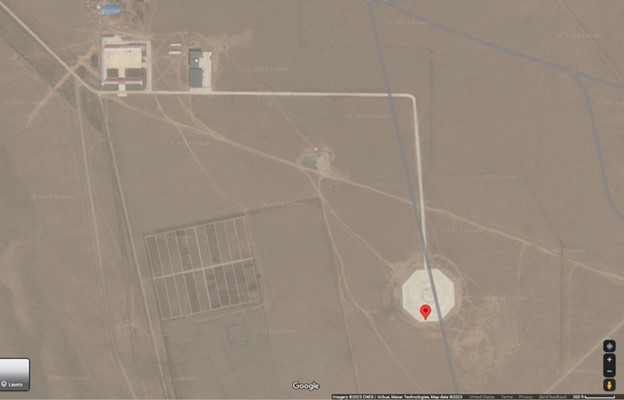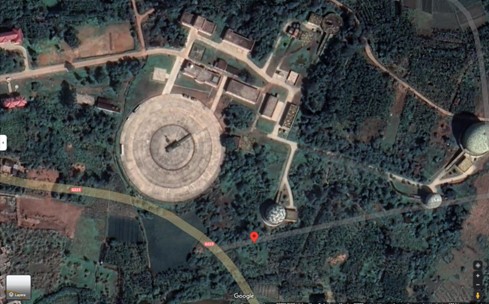The Chinese Spy Balloon Saga, Part 2
China continues to deny that the balloon was used for spying on military basesThe U.S. has shot down four aerial objects this month, one of which was a Chinese surveillance balloon that had traversed the U.S. from Idaho to the Atlantic Ocean. Part 1 of Mind Matters Spy Balloon Saga provides an overview of the four aerial objects that were shot down. Since then, several media outlets found additional information on China’s global high-altitude balloon program, including that the balloon shot down in the Atlantic likely launched from Hainan Island and was intended to surveil U.S. Pacific military bases in Guam and Hawaii. The balloon inadvertently traversed into the continental U.S.
Here is a rundown of what of several media outlets have reported:
There are 2 known launch sites in China: Dorbod Banner (Inner Mongolia) and Hainan Island
One of China’s balloon launch sites is at Dorbod Banner in Inner Mongolia. This site has been a known balloon-launch site since 2016, and it was because of similarities to this site that researchers were able to identify the Hainan Island site. Satellite imagery provide by Planet Labs and analyzed by Middlebury Institute of International Studies shows the possible location of the Hainan Island balloon launch facility.
A Google Earth image of the two sites shows that they have similar features, including a large launch pad, a nearby support structure with radar equipment, and according to researchers at the Middlebury Institute, both sites have a tall building that likely served as a hangar.


At one point, Google Earth showed a dirigible on the Hainan Island launch site, but that image has since been updated. (See here for the image.)
According to Middlebury Institute of International Studies, the balloon sites have similar features to NASA’s Columbia Scientific Balloon Facility in Palestine, Texas as well as other balloon launch sites in Australia and New Zealand.

Did China’s Military Learn from Google’s X Division?
The New York Times and The Wire China profiled Wu Zhe, architect of China’s balloon program at Beijing Nanjing Aerospace Technology Co. According to The Wire China, Wu and his business partner, Wang Dong, are linked to four of the six companies that the U.S. Commerce Department has sanctioned for ties to the Chinese military.
Beijing Nanjing Aerospace Technology had signed an agreement with Inner Mongolia’s Xilinhot city government to construct an industrial park where it could conduct near-space research and balloon launches. They completed their first test flight in 2015 with a near-space vehicle called “Dreams Come True Series”. According to The Wire, a 2019 article in Chinese media “describes an ‘airship’ developed by Wu circumventing the globe and flying at around 65,000 feet…” Wu said that “This is the first time that humans have used an aerodynamically controlled stratospheric airship to fly around the world at an altitude of 20,000 meters.”
In a recent Wired column, tech writer and Wired editor Steven Levy speculated as to whether China used Google’s research on high-altitude balloons to build its program, a reasonable question, given Beijing’s propensity for co-opting Western tech for its own uses.
Google’s research lab, Google X, pioneered a high-altitude balloon program to provide cellular and internet access to underserved areas of the globe. The project was dubbed “Loon” and did its first public test in 2013. The Loon program, run by Mike Cassidy until 2017, had accomplished everything Wu had claimed as being first. Levy spoke to Cassidy and Russ Van Der Werff at Aerostar, which partnered with Loon:
We advanced the technology significantly,” says Cassidy. This point was missed by many pundits commenting on the Chinese spy ship. “Everyone you talk to after the Chinese spy story is saying you can’t fly a balloon halfway around the world and put it where you want,” says Aerostar’s vice president of stratospheric solutions, Russ Van Der Werff. “We do that every week.”
-Steven Levy, Google Pioneered Stratospheric Loon Balloons. Was China Watching? | WIRED
Cassidy said that before Wu claimed to have exceeded 60,000 feet with his balloons, Loon was able to sustain a balloon above 60,000 feet for a longer period of time. Additionally, Cassidy says that one of his balloons circumvented the globe at least 14 times before Wu claimed to have been the first to do so. Wu also claimed to have networked three balloon, to which Cassidy points out his group had several dozen balloons in the air and networked at one time.
The Loon program ended in 2021 because of funding and the proliferation of internet access. Google X made available online all of Loon’s data and technical specs [https://x.company/projects/loon/the-loon-collection/]. However, as is often the case with technologies, this raises ethical questions for dual-use research. A balloon project meant to provide internet access to remote areas, can also be used to surveil those same areas. According to a Washington Post article by its China bureau chief, Lily Kuo, China’s spy balloons were first used in the country to surveil its population several years before the went global:
The devices have been deployed to monitor residents in the western region of Xinjiang, support security for the Shanghai Expo and patrol for terrorist activity in remote mountainous regions of the country.”
-Lily Kuo, “Before They Floated Abroad, China’s Spy Balloons Were Already Used at Home”, Washington Post, 02/16/23
Among the examples Kuo cited from Chinese internet is one government website for a tulip festival in Xinjiang in 2014, that lauded the use of a tethered surveillance balloon equipped with hi-definition and infrared cameras to monitor individual tourists, cars, and buildings. The site said that “even an object the size of a book will be seen by the ‘eye in the sky.”
According to Kuo, these balloons are used for “social stability maintenance” and point to Beijing’s larger ambitions for use overseas and in case of war.
Who Controls Near-Space?
A more fundamental question is “Who controls the skies?,” or put another way, just how far above the earth’s surface does a country’s airspace go? Doug Cameron at the Wall Street Journal points out that this is a controversial question because there are no international standards for sovereign air space above 60,000 feet.
International treaties hold that nations have no sovereignty in the reaches of outer space where satellites orbit, typically understood to begin about 330,000 feet. While a handful of countries have laid claim to the heights between 60,000 feet and that boundary, an expanse often cited as “near space,” those claims aren’t recognized by international law.”
-Doug Cameron, Chinese Balloon and Mystery Objects Raise Question of Who Controls ‘Near Space’ – WSJ
Both the U.S. and China, as well as other countries with space programs, have lobbied for fewer regulations of airspace. Next month the U.N. Committee on the Peaceful Use of Outer Space will meet to discuss an international regulatory framework.
China continues to deny that the balloon was used for spying on military bases but was research balloon that flew off course. China has since accused the U.S. of flying spy balloons into Chinese airspace.
